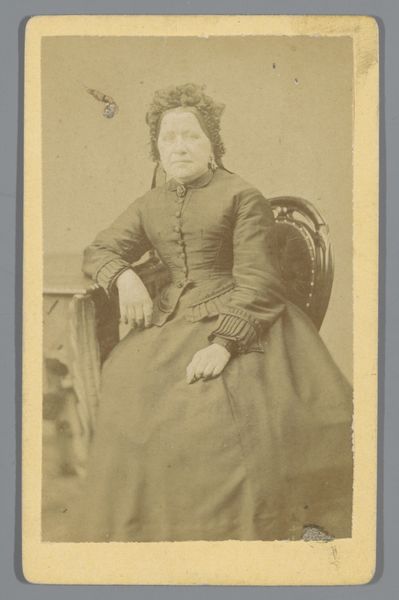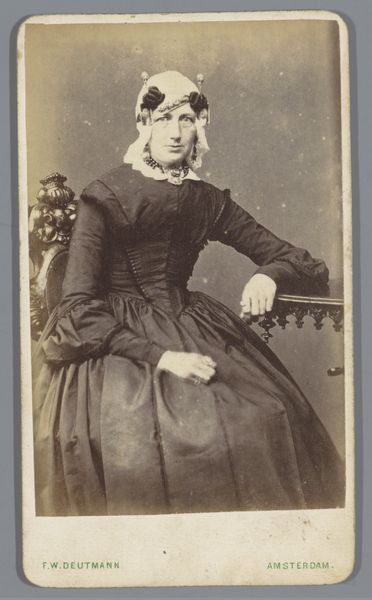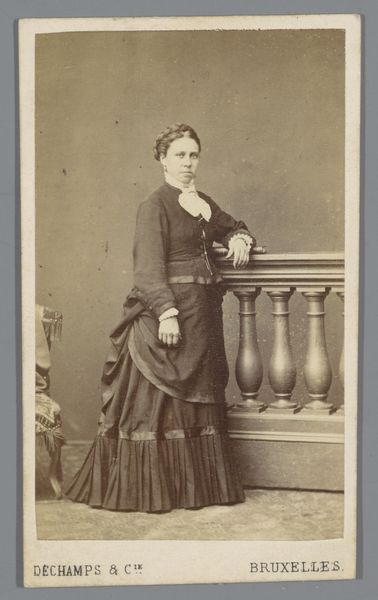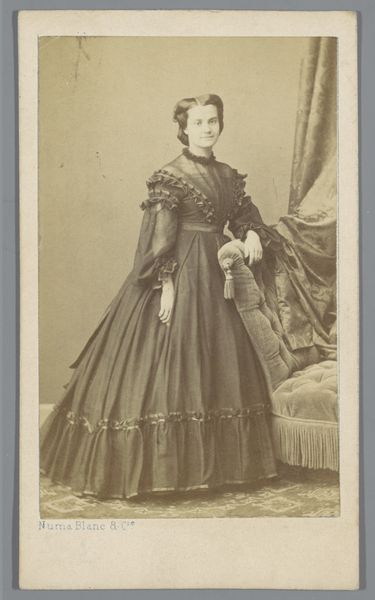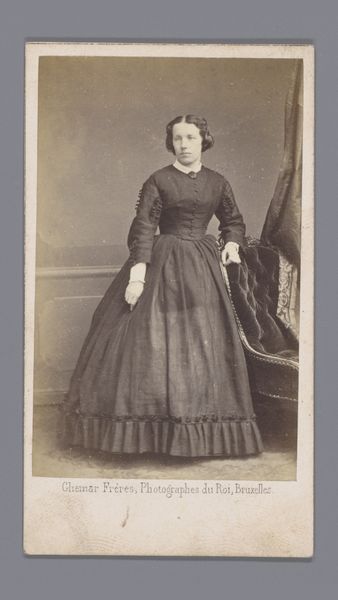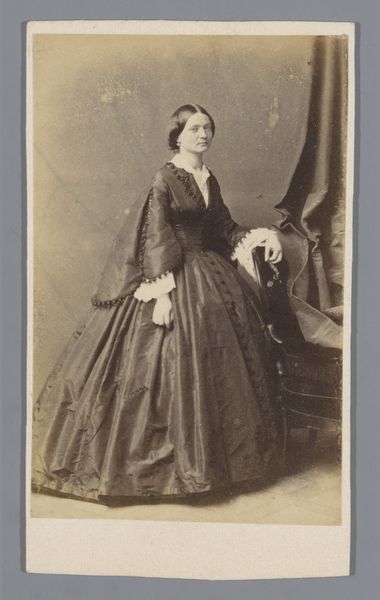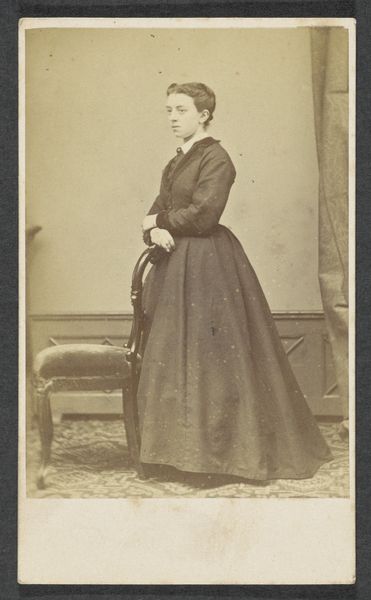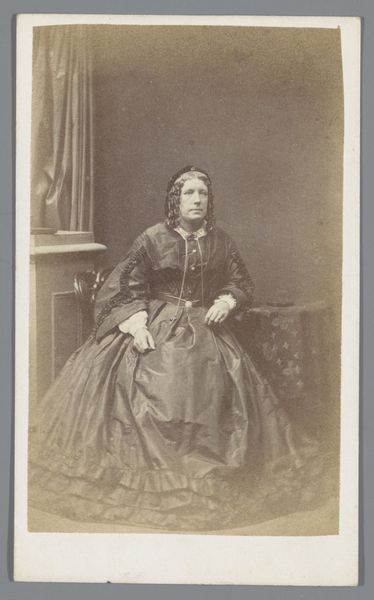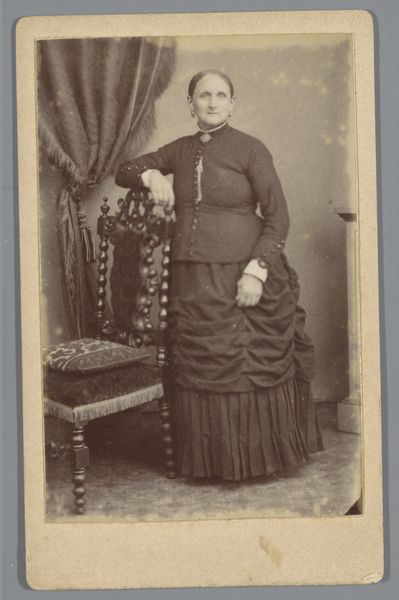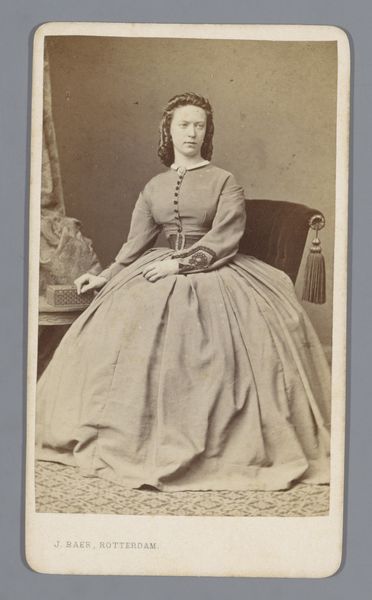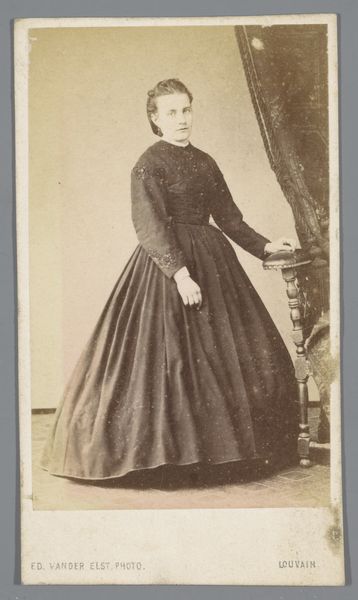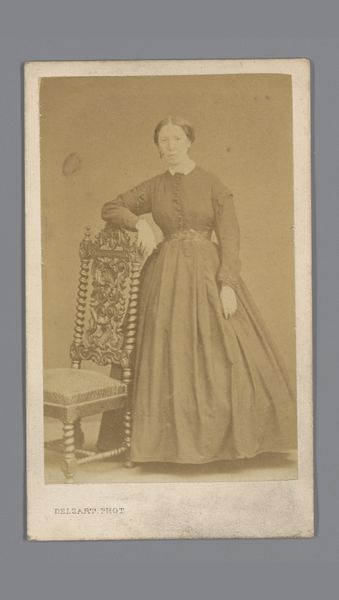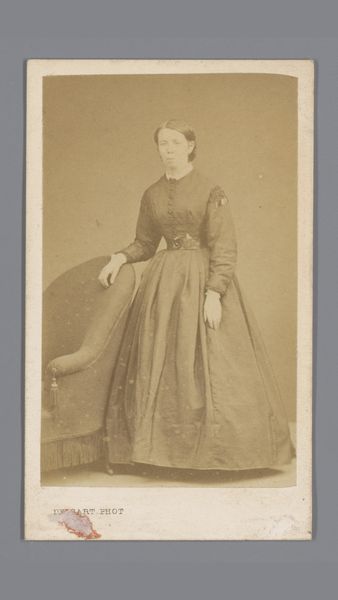
Portret van een onbekende vrouw, zittend op een stoel met een boek in haar handen 1852 - 1863
0:00
0:00
photography, gelatin-silver-print
#
portrait
#
book
#
photography
#
gelatin-silver-print
#
watercolor
Dimensions: height 106 mm, width 62 mm
Copyright: Rijks Museum: Open Domain
Editor: This is a portrait by Bisson Frères, taken between 1852 and 1863, made using a gelatin-silver print. The photograph features an unknown woman seated, holding a book. I’m really struck by the texture created by the printing process; it’s almost like a watercolor. What catches your eye about this image? Curator: I'm drawn to the tangible elements, particularly the dress and its construction. Consider the fabric – probably wool or linen – its availability, and the labor involved in its creation. The garments, particularly for a formal portrait, suggest a certain social class and economic position for the sitter and also for the artist duo Bisson Frères. Does the subject's book reinforce any potential social implications in your opinion? Editor: Definitely, the book is a strong indicator of literacy, and likely, access to education. Considering the limitations of early photography, and the cost of sitting for a portrait, who was this photograph likely for? Was it for personal use, perhaps for a family member? Curator: Precisely. Thinking about the dissemination of photographs at that time is important. This piece, because of the gelatin-silver printmaking process, could potentially be reproduced for a broader audience, depending on its original intent and the studio’s practices. These kinds of prints really democratized portraiture. We should also reflect on the ethics of photography in the nineteenth century. It would have meant the exploitation of labor for its production. What can you read from that relationship between subject, artist and viewer in this artwork? Editor: That's a perspective I hadn’t fully considered, and it enriches the understanding of the subject’s own life. So much information from one portrait. Curator: Absolutely. Material analysis can highlight often overlooked aspects, and provoke questions of labor, cost, and privilege. It’s the unseen history embedded in the materials that I find the most compelling part of art history.
Comments
No comments
Be the first to comment and join the conversation on the ultimate creative platform.

